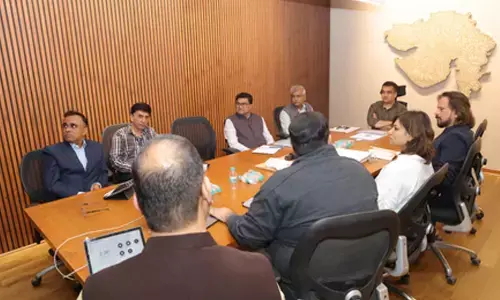How skilling & upskilling can combat quiet quitting

Quiet quitting is a kind of employee disengagement where an employee carries out only those responsibilities specified in their job description. Insead of quitting their jobs, they prefer to stick to that particular role and don’t go ‘above and beyond’ for any additional responsibilities. They tend to feel undervalued, unrecognized, and unmotivated to push the envelope and try harder. This kind of quiet attrition can lead to a loss of valuable talent, disrupt team dynamics, and increase the costs associated with hiring and training replacements.
Skilling and upskilling can play a crucial role in preventing quiet quitting by providing employees with opportunities to develop their skills and advance their careers within the company. This can increase job satisfaction and motivation, as employees feel valued and recognized for their contributions. Furthermore, offering skilling and upskilling programs can make a company more attractive to potential hires and enhance its reputation as a provider of professional development opportunities.
The world of work has been undergoing myriad changes from the past few years, owing to technological advancements, changing demographics and settling in with the ‘new normal’ post the pandemic. While hybrid work cultures and remote workspaces have done wonders for the world of work, they have brought up a set of challenges as well.
The silent revolution
Quiet quitting is a kind of employee disengagement where an employee carries out only those responsibilities specified in their job description. Insead of quitting their jobs, they prefer to stick to that particular role and don’t go ‘above and beyond’ for any additional responsibilities. They tend to feel undervalued, unrecognized, and unmotivated to push the envelope and try harder. This kind of quiet attrition can lead to a loss of valuable talent, disrupt team dynamics, and increase the costs associated with hiring and training replacements.
Mind the skills gap
At the root of the problem, is the skills gap in the employment market. According to the Global Skills Gap Report, 76% of the Indian workforce claim that they have personally been influenced by the skills gap. Lack of opportunities for advancement at work is another key factor further deepening the skill gap. When employees feel unfulfilled at the workplace, their job satisfaction decreases. This can result in feelings of frustration, boredom, and dissatisfaction with their careers. This, in turn, can lead to career stagnation, a lack of motivation, negative impacts on mental health, and limit future opportunities.
Training and development
Skilling, reskilling and upskilling have a huge role to play in career dynamics. When employees have the opportunity to learn and grow, they are more likely to feel engaged and fulfilled in their work.
Skilling and upskilling can play a crucial role in preventing quiet quitting by providing employees with opportunities to develop their skills and advance their careers within the company. This can increase job satisfaction and motivation, as employees feel valued and recognized for their contributions. Furthermore, offering skilling and upskilling programs can make a company more attractive to potential hires and enhance its reputation as a provider of professional development opportunities.
Immersive training solutions
Organizations can implement skilling and upskilling through training programs and workshops. These programs can cover a range of topics, from technical skills related to specific jobs to leadership and communication skills that can help employees advance their careers. Offering a variety of options ensures that employees can select programs that align with their personal and professional goals.
Immersive training solutions are one of the most effective ways to enhance employee capabilities. Immersive training uses virtual and augmented reality technologies to provide employees with a highly engaging and interactive learning experience. These solutions can be used in a variety of industries and settings, to help employees develop new skills and improve their performance. A key benefit of immersive training solutions is that they provide hands-on experience in a simulated environment, allowing individuals to practice and develop their skills in a low-risk setting.
Growth and flexibility
Workers feel motivated when the work environment supports personal and professional growth, and employees are encouraged to take on new challenges. This makes them feel valued and invested in their careers. Furthermore, allowing employees to have flexible career paths and giving them the freedom to shape their career journey within the company are great morale boosters.
Job rotation, cross-functional assignments, internal mobility, and skill development programs enable employees to explore different roles, and gain diverse experiences and skills.
Mentorship and coaching
Mentorship and coaching programs are invaluable for employee development and growth. Mentorship involves pairing employees with more experienced individuals who can offer guidance and advice on both professional and personal matters. Organizations that invest in skilling and upskilling are well-positioned to succeed in today’s rapidly changing business landscape as it helps them create a culture of growth and development that benefits both employees and the business as a whole.
(The author is a Chief Growth Officer, Veative Group)
















